#calligrapha beetle
Text

I don't remember posting this, but I've been doodling beetles from time to time cause they make me happy 😊
#illustration#beetle#calligrapha beetle#insects#art#artist on tumblr#image description#image described
13 notes
·
View notes
Text

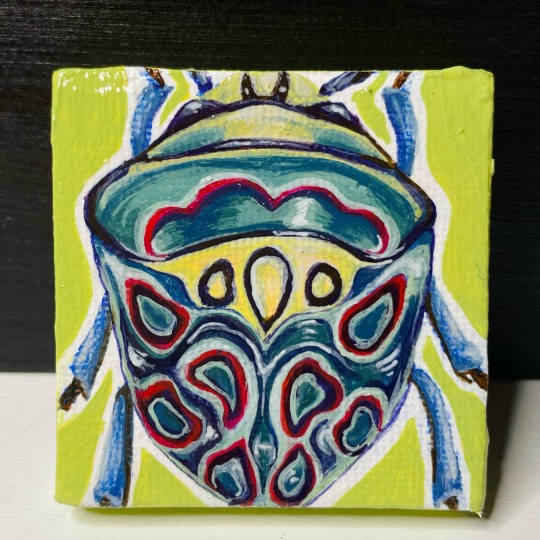
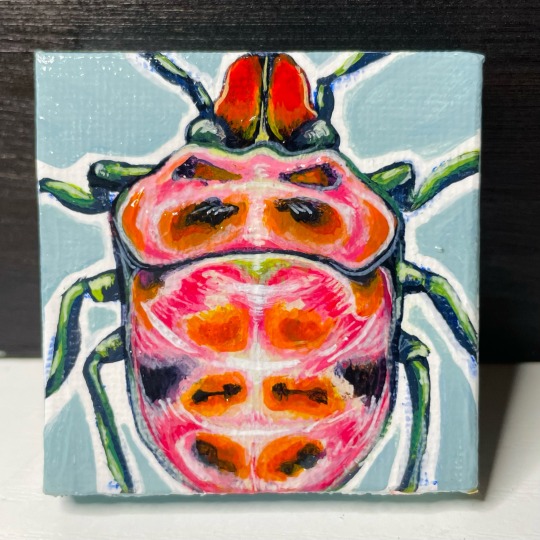
calligrapha beetle | picasso bug | pink shield backed jewel bug
instagram giveaway! / website
#art#atinorx#aesthetic#colorful#my art#illustration#naturecore#acrylic painting#cottagecore#bugblr#bugz#bug lover#bug core#picasso bug#beetles#jewel bug#calligrapha beetle#pretty bugs#mini art#commissions open#artists on tumblr#women of illustration#miniature painting#halloween#autumn#falloween#creepy cute#vibrant art
0 notes
Text
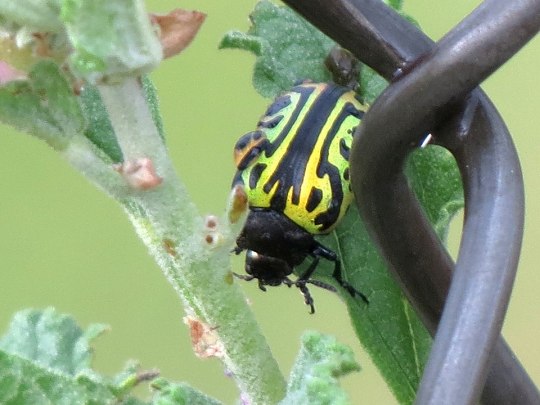
A globemallow leaf beetle (Calligrapha serpentina) in North America
by Luis Alvaz
#globemallow leaf beetle#beetles#calligrapha serpentina#calligrapha#Chrysomelidae#coleoptera#insecta#arthropoda#wildlife: north america
149 notes
·
View notes
Text
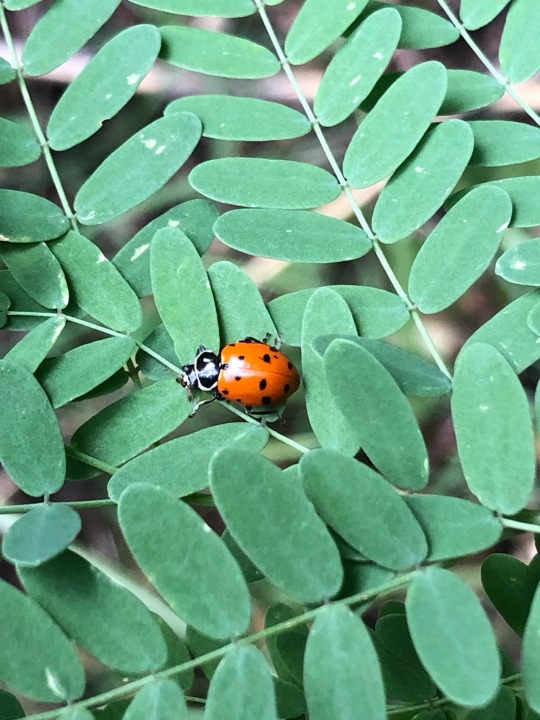
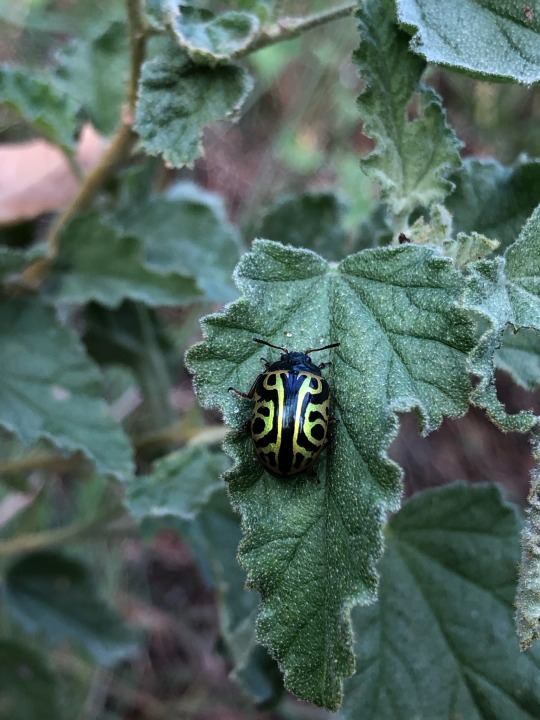

Today’s encounters
#mine#bugs#beetles#insects#ladybug#hippodamia convergens#globemallow leaf beetle#calligrapha serpentina#and a third unknown friend#bugs of tumblr
2 notes
·
View notes
Text
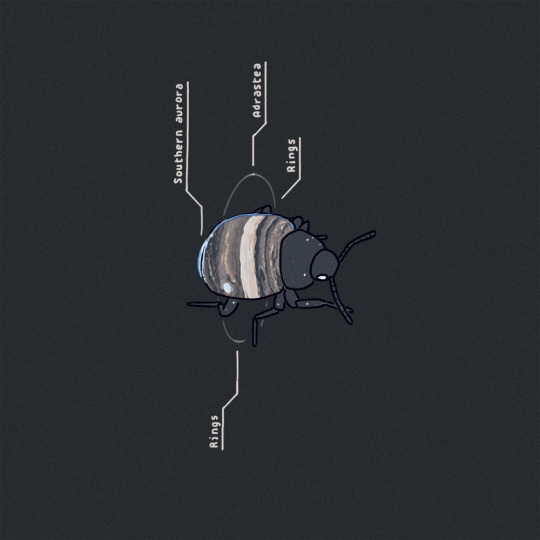





i dug myself out of beetle debt and tomorrow: the final beetle! (additional beetles here)
calligrapha beetle x jupiter (webb telescope) | ten-lined june beetle x printer test
rose chafer x safavid mosaic | grapevine beetle x plaid
rainbow darkling beetle x razer | small hive beetle x kantha
#also the color teal is my bosom friend and companion and the color green is my FUCKING ARCHNEMESIS#bug cw#insect cw#beetle party
2K notes
·
View notes
Text

Eastern Cicada Killer
A hallmark of nature is diversity. Here an Eastern Cicada Killer (Sphecius speciosus) scans the surrounding area from its perch while a Leaf Beetle (Calligrapha bidenticola) is on a mission of its own making...both insects unalike as they can be.
22 notes
·
View notes
Text

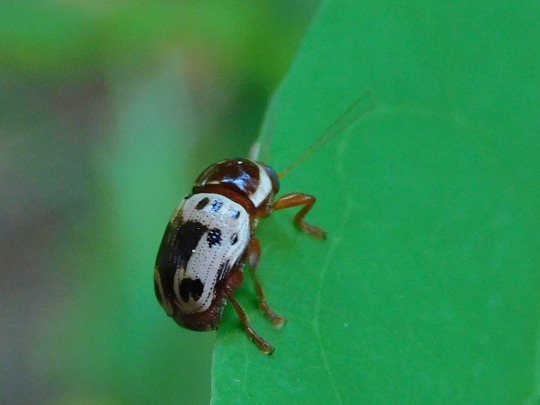

Leaf Beetle -Calligrapha (scalaris group)
14 notes
·
View notes
Photo
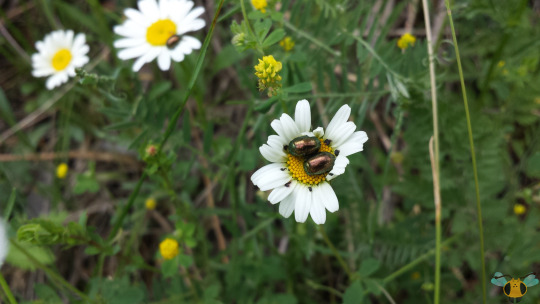

St. John’s Wort Beetle - Chrysolina hyperici or C. quadrigemina
There still aren’t enough images in my gallery to have complete set of this specimen, but I’m hoping to change that with a better grasp on their diet and the times at which they are active throughout the year. For the latter, both of these finds were during June, so that will hopefully be the best time to find them. Furthermore, it looks like they’ll be easy to spot as they feed among the flowers. They can eat quite a bit, so much so that when I first found a few (all those years ago), I mistook them for Japanese Beetles due to their similar coloration and feeding habits. It wasn’t until 4 years later that I took a closer look and realized that the St. John’s Wort Beetle belongs to the Leaf Beetle family. For a comparison to similarly shaped cousin, consider revisiting the section of the blog detailing the Dogwood Calligrapha. As the name suggests, this reflective Beetle’s preferred host plant is the St. John’s Wort and other wort plants that belong to the Hyperici genus.
The larvae are the major consumers of leaves (and shoots), but their diet shifts to flower parts upon reaching their armored adult stage. The individual in Picture number 2 appears to have found a tasty specimen of spotted St. John’s wort (H. punctatum) and will goes straight for the buds and the flower innards. The individuals in Picture 1 haven’t found a St. John’s wort to feed on, but seem inquisitive on the daisies and may see it as a viable food source. Humorously, daisies were once called worts, but that is simply a historic word meaning plant, not that these Beetles would know. In all seriousness, their ability to feed on St. John’s wort and manage the plant’s ability to spread led to the importing of these insects to North America, and thus we find them now. It’s handy to have them around given the toxicity of the unrefined plant to mammals. If you can find the flowers, hopefully these little gems are to be found as well. You’d do well to remember the occasion when you see your reflection in the Beetle’s shell.
Pictures were taken in June 12, 2016 with a Samsung Galaxy S4 and June 27, 2020 with a Google Pixel 4.
#jonny’s insect catalogue#ontario insect#beetle#st john's wort beetle#saint john's wort beetle#leaf beetle#coleoptera#insect#toronto#june2016#june2020#2020#2016#entomology#nature#invertebrates
30 notes
·
View notes
Note
what bug would i be ^_^
hmmm lemme see baby hehehe ud be a cute lil Calligrapha Beetle the one with the lil hearts is really u


7 notes
·
View notes
Text
Back on my hyperfixation shenanigans so I have not slept and here's a list of what I consider to be the prettiest beetles, butterflies and moths, damselflies, and grasshoppers and crickets that inhabit Colorado and Kentucky according to insectidentification.org :
COLORADO
Emerald ash borer (Agrilus planipennis)
Fifteen-spotted lady beetle (Anatis labiculata)
Golden tortoise beetle (Charidotella sexpunctata)
Knapweed root weevil (Cyphocleonus achates)
Longhorn beetle (Semanotus amethystinus)
Dogbane Leaf Beetle (Chrysochus auratus)
European Ground Beetle (Carabus nemoralis)
Golden Net-wing Beetle (Dictyoptera aurora)?
Margined Blister Beetle (Epicauta funebris)
May Beetle - P. lanceolata (Phyllophaga lanceolata)
Mottled Tortoise Beetle (Deloyala guttata)
Pleasing Fungus Beetle (Gibbifer californicus)
Poplar Borer Beetle (Saperda calcarata)
Shining Leaf Chafer - Anomala spp. (Anomala spp.)
Signate Lady Beetle (Hyperaspis signata)
American Lappet Moth (Phyllodesma americana)
Cinnabar Moth (Tyria jacobaeae)
Common Checkered-Skipper (Pyrgus communis)
Glover's Silkmoth (Hyalophora columbia gloveri)
Great Ash Sphinx Moth (Sphinx chersis)
Autumn Meadowhawk (Sympetrum vicinum)
Black Saddlebags Skimmer (Tramea lacerata)
Bird Grasshopper (Schistocerca spp.)
Obscure Bird Grasshopper (Schistocerca obscura)
Sooty Longwing Katydid (Capnobotes fulginosus)
KENTUCKY
Andrew's Snail-eating Beetle (Scaphinotus andrewsii)
Black Firefly (Lucidota atra)
Calligrapha Beetle (Calligrapha spp)
Eastern Hercules Beetle (Dynastes tityus)
Emerald Euphoria Beetle (Euphoria fulgida)
Glowworm (Phengodes spp.)
Goldsmith Beetle (Cotalpa lanigera)
Metallic Wood-boring Beetle: Chalcophora (Chalcophora fortis)
Notched-mouth Ground Beetle (Dicaelus purpuratus)
One-spotted Tiger Beetle (Apterodela unipuncata)
Rainbow Darkling Beetle (Tarpela micans)
Rainbow Scarab Beetle (Phanaeus vindex)
Six-spotted Tiger Beetle (Cicindela sexguttata)
Southern Sculptured Pine Borer Beetle (Chalcophora georgiana)
Stag Beetle (Lucanus capreolus)
Twice-stabbed Lady Beetle (Chilocorus stigma)
Vietinghoff's Ground Beetle (Carabus vietinghoffii)
Abbott's Sphinx Moth (Sphecodina abbottii)
American Ermine Moth (Yponomeuta multipunctella)
Arched Hooktip (Drepana arcuata)
American Bird's-Wing Moth (Dypterygia rozmani)
Arcigera Flower Moth (Schinia arcigera)
Attentive Crocus Moth (Xanthotype attenuaria)
Basswood Leafroller (Pantographa limata)
Beautiful Wood-Nymph (Eudryas grata)
Black-waved Flannel Moth (Megalopyge crispata)
Blackberry Looper (Chlorochlamys chloroleucaria
Blinded Sphinx Moth (Paonias excaecata)
Bluish Spring Moth (Lomographa semiclarata
Buck Moth (Hemileuca maia)
Carmine Snout Moth (Peoria approximella)
Carrot Seed Moth (Sitochroa palealis)
Cecropia Silk Moth (Hyalophora cecropia)
Changeable Grass-Veneer (Fissicrambus mutabilis)
Colorful Zale (Zale minerea)
Common Lytrosis Moth (Lytrosis unitaria)
Confused Eusarca (Eusarca confusaria)
Cross-lined Wave (Timandra amaturaria)
Curve-toothed Geometer (Eutrapela clemataria)
Dark-banded Geometer (Ecliptopera atricolorata)
Deep Yellow Euchlaena (Euchlaena amoenaria)
Diaphania costata (Diaphania costata
Dimorphic Macalla (Epipaschia superatalis)
Dot-lined White (Artace cribrarius)
Dotted Gray (Glena cribrataria)
Drab Prominent (Misogada unicolor)
Eight-spotted Forester Moth (Alypia octomaculata)
Elder Shoot Borer (Achatodes zeae)
Explicit Arches (Lacinipolia explicata)
Eyed Paectes Moth (Paectes oculatrix)
Falcate Orangetip (Anthocharis midea) (female)
Fall Webworm (Hyphantria cunea)
False Crocus Geometer (Xanthotype urticaria
Fervid Plagodis (Plagodis fervidaria)
Fig Sphinx (Pachylia ficus)
Friendly Probole Moth (Probole amicaria)
Giant Leopard Moth (Hypercompe scribonia)
Goldcap Moss-eater Moth (Epimartyria auricrinella)
Gray-edged Hypena (Hypena madefactalis)
Green Arches (Anaplectoides prasina)
Hag Moth (Phobetron pithecium
Hibiscus Leaf Caterpillar Moth (Rusicada privata)
Imperial Moth (Eacles imperialis)
Lesser Maple Spanworm Moth (Speranza pustularia
Luna Moth (Actias luna)
Melissa Blue Butterfly (Plebejus melissa spp.)
Modest Sphinx Moth (Pachysphinx modesta)
Morbid Owlet Moth (Chytolita morbidalis)
Orange-patched Smoky Moth (Pyromorpha dimidiata)
Pale Beauty (Campaea perlata)
Pale Lichen Moth (Crambidia pallida)
Pale Metarranthis (Metarranthis indeclinata)
Pandorus Sphinx Moth (Eumorpha pandorus)
Parthenice Tiger Moth (Apantesis parthenice)
Pearly Wood-Nymph Moth (Eudryas unio)
Pero Moth (Pero spp.)
Pink-patched Looper (Eosphoropteryx thyatyroides)
Pipevine Swallowtail (Battus philenor)
Pistachio Emerald Moth (Hethemia pistasciaria)
Plebeian Sphinx Moth (Paratrea plebeja) (Caterpillar)
Primrose Moth (Schinia florida)
Promiscuous Angle Moth (Macaria promiscuata)
Raspberry Pyrausta (Pyrausta signatalis)
Rustic Sphinx Moth (Manduca rustica)
Saddleback Caterpillar Moth (Acharia stimulea)
Saddled Yellowhorn (Colocasia flavicornis)
Salt-and-pepper Looper Moth (Syngrapha rectangula)
Satin Moth (Leucoma salicis)
Scarlet-winged Lichen Moth (Hypoprepia miniata)
Schlaeger's Fruitworm Moth (Antaeotricha schlaegeri)
Showy Emerald Moth (Dichorda iridaria)
Small Bird Dropping Moth (Ponometia erastrioides)
Snowy Urola (Urola nivalis)
Sorghum Webworm Moth (Nola cereella)
Southern Flannel Moth (Megalopyge opercularis)
Southern Longhorn Moth (Adela caeruleella)
Southern Pine Sphinx (Lapara coniferarum)
Southern Tussock Moth (Dasychira meridionalis)
The Badwing (Dyspteris abortivaria)
Unspotted Looper Moth (Allagrapha aerea)
Venerable Dart Moth (Agrotis venerabilis
Vine Sphinx Moth (Eumorpha vitis)
Walnut Sphinx Moth (Amorpha juglandis)
Wavy-lined Emerald Moth (Synchlora aerata)
Western Grapeleaf Skeletonizer Moth (Harrisina metallica)
White Flannel Moth (Norape ovina)
White Slant-line Moth (Tetracis cachexiata)
White-fringed Emerald Moth (Nemoria mimosaria)
Yucca Moth (Tegeticula, Greya, and Prodoxus spp.)
Carolina Locust (Dissosteira carolina)
Eastern Shieldback Katydid (Atlanticus spp.)
Slender Meadow Katydid (Conocephalus fasciatus)
True Katydid (Pterophylla camellifolia)
Ebony Jewelwing (Calopteryx maculata)
Midland Clubtail (Gomphurus fraternus)
Red Saddlebags (Tramea onusta)
Seepage Dancer (Argia bipunctulata)
5 notes
·
View notes
Note
🐛????
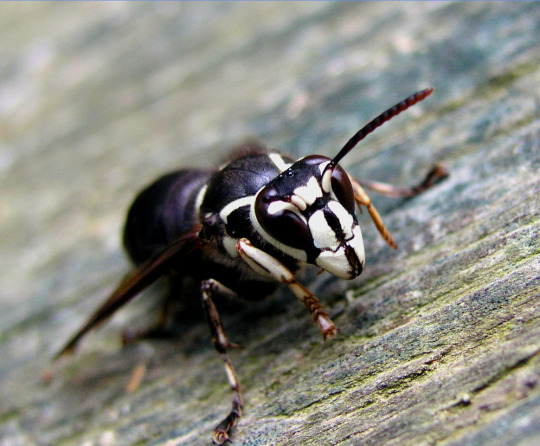
Bald-faced hornets
In the past Insecta would mostly just compare Rorschach to any insect that had a pattern of black and white coloring, and when eventually gaining his phone number, and sending him pictures of bugs she thought resembled him. One of them was calligrapha beetles, though they only reminded her of Rorschach for their coloring, no other factors. the bug that she thinks embodies Rorschach entirely is the bald-faced hornet, not only does it fit Rorschach’s color scheme of black and white, it’s also a highly aggressive insect that has a horrible venomous sting with a sharp memory for remembering people who’ve wronged them. Now, since Insecta has only seen the hostile side of Rorschach, she feels like this fits him very well.
3 notes
·
View notes
Text
having a normal one (beginning my notes on calligrapha beetles and was so taken with how beautiful they are i said “lady beetles wish they were you” and then felt bad at not fully appreciating the beauty of the lady beetles elegant and silly design) like a totally neurotypical person
#touch of the tism#everyone has 10+ pages of notes detailing the most common types of beetles in the northeast right#did you know beetles are not true bugs#i don’t even know what to do with that#bugs#insects -
2 notes
·
View notes
Text
I havent drawn very much since I drew that cute lil calligrapha beetle, but I think I definitely do want to draw more bugs and animals.
#i used to draw birds and fish a lot actually#my mom actually has a drawing of a beta and a sparrow i drew when i was in college framed and hung on the wall#cause she liked them a bunch and honestly i do to some of my best linework :))
0 notes
Text
Oh man, found some calligrapha beetles! The markings are so pretty! The pattern on this one almost looks like a lizard! Ink blot lizard, lolololol
0 notes
Photo

#insect#beetle#calligrapha beetle#flower#photographers on tumblr#textless#amadee ricketts#wildflowers#mallow#bud#macro#arizona#green#orange#of course this was in august
4K notes
·
View notes
Text

I found this beautiful Calligrapha Beetle on my car today! Photographed in New Hampshire on June 5, 2021.
I love this little bab 🥺
39 notes
·
View notes